In 1937, the USA was still emerging from the Great Depression, and WWII was two years in the future. This was the year of the Hindenburg disaster and the opening of the Golden Gate Bridge. Radio was the dominant broadcast medium. Commercial television would not dominate for many years.
Obviously, much has changed since then. The National Electrical Code (NEC) and other installation codes are revised on a 3-year cycle so that current equipment, technology, and installation methods are recognized. The 2023 NEC is comprised of an Introduction followed by 8 chapters of technical requirements – a total of more than 160 Articles. But that is not enough. See Figure 1.
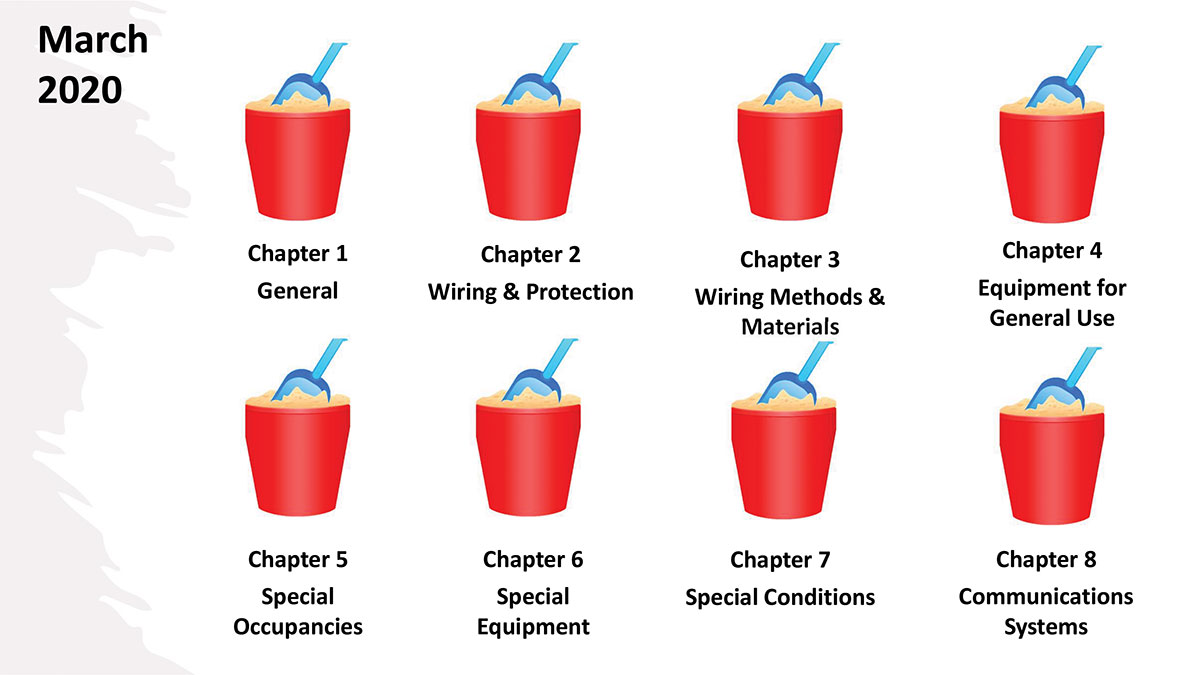
One thing that has not changed since 1937 is the structure of the NEC. The current NEC format was developed in that year to better address the technology of the time and allow for future innovation. That structure has served the electrical industry well, but after 87 years, improvement is warranted. See Figure 2.
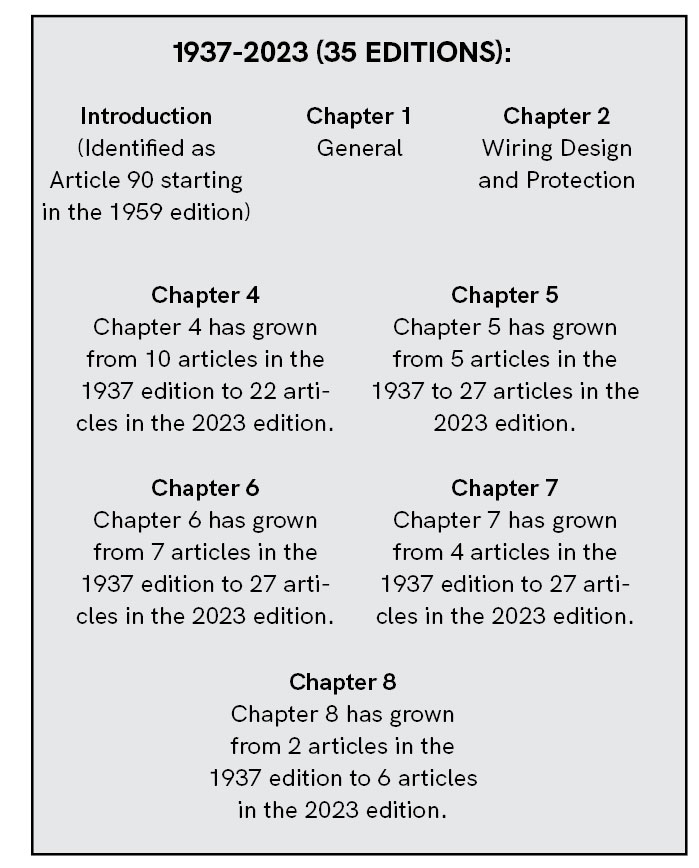
Not only has electrical technology and equipment changed since 1937, but the methods of communication and dissemination of information are completely different. We live in a digital age where information is presented through electronic means far more than paper-based publications. Do you receive most of your news from a newspaper or your phone? Do you send letters to associates through the post office or via email? Some of us of a certain age may value the old methods, but technology waits for no one.
Recently while cleaning out the attic, I came across the course materials from my electrical apprenticeship. I graduated (turned out) from the IBEW/NECA NJATC in 1984. The program was a 4-year commitment in those days (1980 -1984), and all the materials were paper-based. See Figure 3.
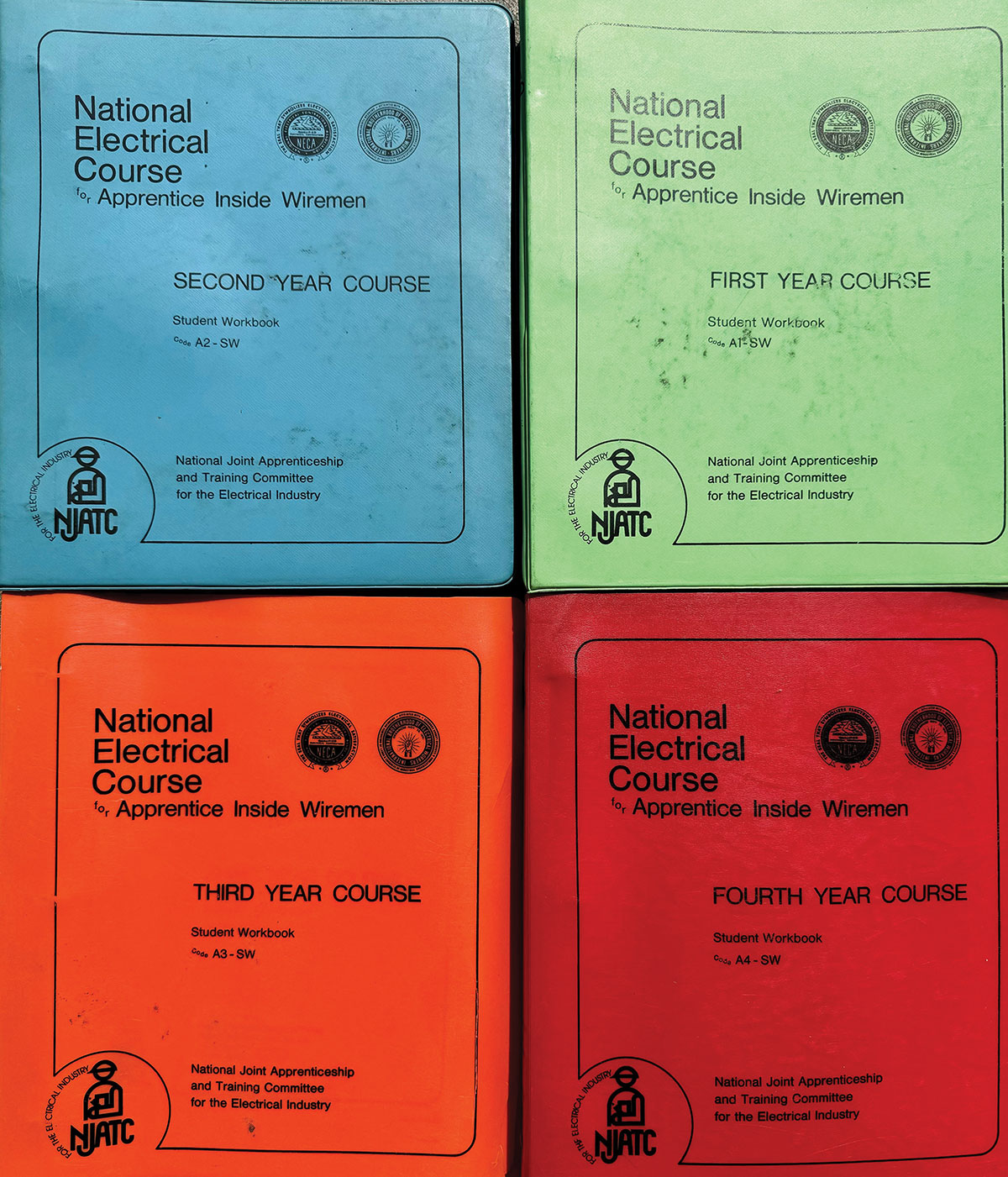
Today the apprenticeship is a 5-year program and computer/online based. See the current format here: https://www.electricaltrainingalliance.org/AboutUs.
The technical training has changed but so has the method of dissemination of content. The method for presentation and access to codes and standards is as critical to understanding as the content itself. Material must be prioritized for digital presentation because that is now the primary conduit for delivery. Ignoring this reality can result in a reduced understanding of the requirements. Is there a financial cost to progress? Absolutely! But the price of refusing to consider improvement is always greater. See the current NJATC (Electrical Training Alliance) program as an example of the progress that results from constant investment. The cost of refusing to evolve is not just monetary. Safety suffers when code requirements are not recognized due to an outdated structure or method of delivery. As an electrical inspector, I must write correction notices every day that result from ignorance of the NEC requirements. Much of that ignorance can be directly related to the current structure of the NEC.
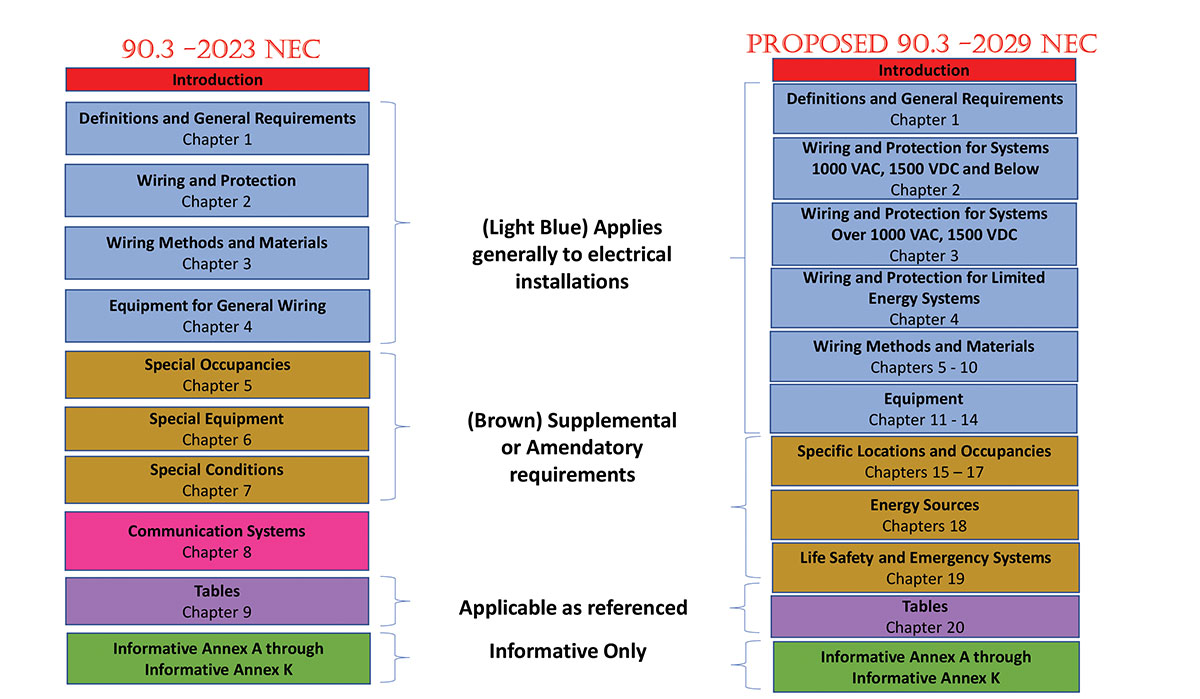
In 2020, the NEC Correlating Committee established a Task Group to consider a revised structure that better addresses current technology and digital dissemination. After much discussion and an affirmative vote by the Correlating Committee, a new format was proposed for the 2029 NEC. See Figure 4. A white paper and PowerPoint presentation created by the Correlating Committee that provides a detailed summary of the proposed changes were made available to all Code Making Panels during the 2026 NEC First Draft meeting in January of 2024.
Increased use of medium voltage, limited energy, and multi-directional power flow are industry trends that are better addressed through the proposed reorganization. Articles for medium voltage and limited energy will now have the same structure as those pertaining to low voltage (not over 1000v ac, 1500v dc nominal) and move to the front of the code. We will increase the number of “buckets” by increasing the number of chapters from 9 to 20. Individual Article identification and numbering is maintained with the current NEC wherever possible. No technical changes are included as that will continue to be the purview of the existing code-making panels. The reorganization simplifies the use of the NEC and permits better content delivery for digital platforms such as NEC LiNK .
The proposed new format will appear as an annex included in the 2026 NEC. Your feedback is desired and essential. But I must ask, if the proposed changes are not acceptable, what is your suggestion? Is the current NEC structure sufficient for the next 87 years? As an NEC user, do you see no room for improvement? And just what is the distinction between the “equipment” of NEC Chapter 4 and the “special equipment” addressed by Chapter 6 anyway? Change simply for the sake of change is never warranted. But refusing to consider change because “we’ve always done it that way” is a path that leads to obsolescence.
Indeed, much has changed since 1937, and after 87 years, it is time to consider a change in NEC structure that will better address the electrical industry of today and the future.





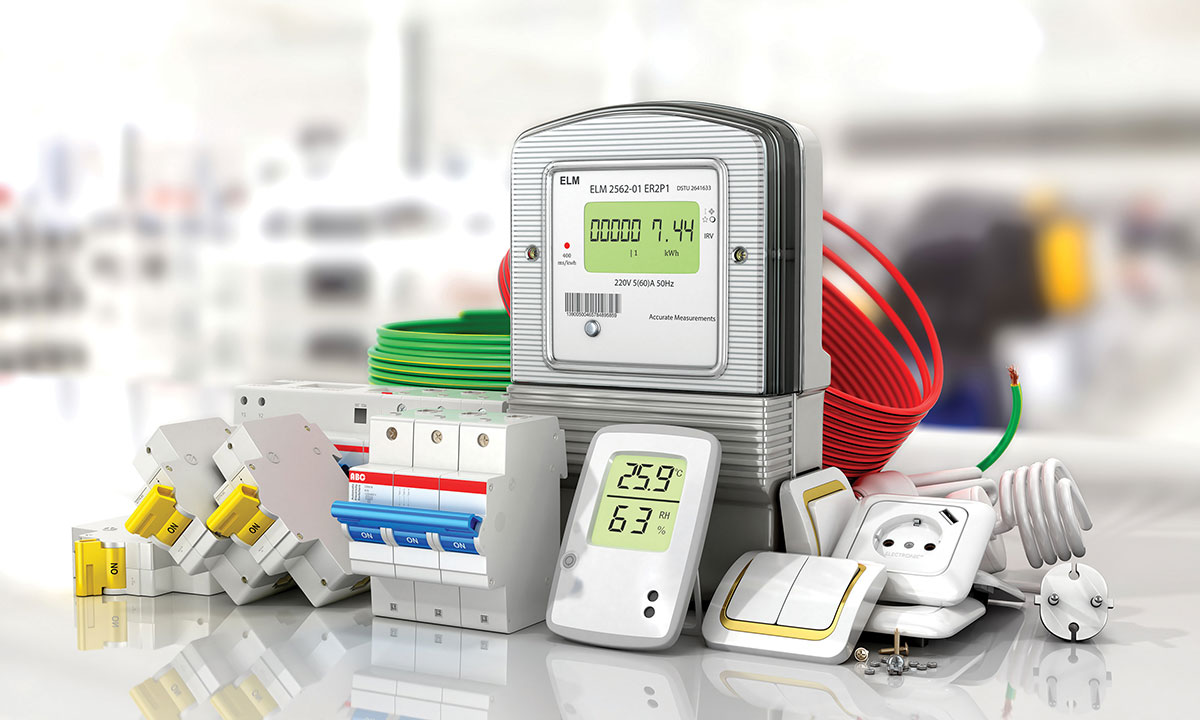









Find Us on Socials